What is Posttraumatic Stress Disorder?
The abuse and neglect types of trauma
Hint: There are 6
What are
1) Neglect
2) Substance abuse by family member
3) Sexual abuse
4) Family violence
5) Physical abuse
6) Verbal abuse
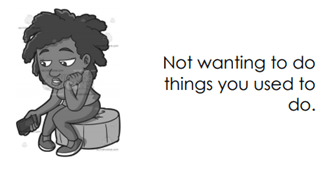
What is Negative Mood/Depression
True or False:
1 and 4 girls and 1 of 6 boys will experience some form of sexual abuse before 18.
What is True
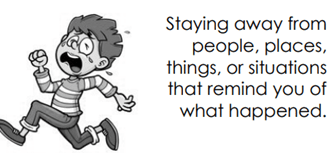
What is Avoidance?
Full name for the therapy TFCBT
What is Trauma Focused Cognitive Behavioral Therapy.
Define sexual abuse
What is an interaction between a child and an adult or another child in which the child is used for the sexual stimulation of the perpetrator or an observer.
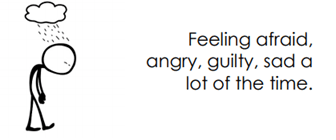
What is Negative Mood
Trauma Symptoms are things kids experience in their:
a) bodies (hurts)
b) heads (thoughts)
c) Both
What is c) both
Stress affects us by increasing the production of chemicals in different parts of our brain and body.
Disasters and crimes that can cause trauma
What are tornados, floods, wildfires, tsunami's, earthquakes, burglaries, community violence, assault by an unknown person, etc..
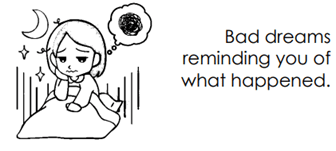
Percentage of youth in the US experience PTSD Hint: Genders have different percentages.
Girls -3%-15%
Boys -1%-6%
Transgender and gender diverse youth - 42% (also have higher amount of adverse childhood experiences)
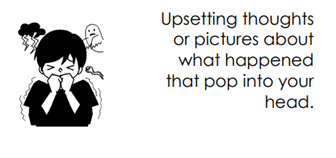
What is Intrusive Thoughts/Re-experiencing
Average time frame for TFCBT to be completed?
What is 12-16 sessions/weeks
20-25 sessions (foster youth population)
Sessions are typically 1x/week
True or false? Sexual abusers are usually strangers to the child
What is False
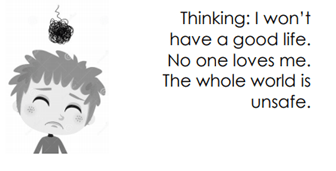
What are Negative Thoughts
True or False: Children who experience trauma will never recover.
What is False: Many children are resilient. With support from parents and counseling, children can recover.
Type of situation, accidents, illness, or injuries that can cause trauma.
Bonus if can identify at least two.
What is surgery, cancer, car accident, sports accident, broken body part, death of a loved one, and a car accident.
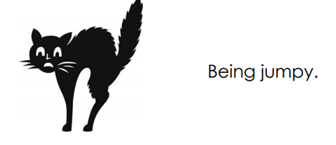
What is Arousal/Hypervigilance
Percentage of children witness a traumatic even before the age of 4?
What is 26%
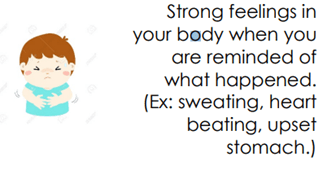
Age range of the treatment population for TFCBT?
What is children ages 3-18.
Who can be sexually abused
What is children of all ages, races, ethnicities, and economic background. Anyone

What is Arousal
Experiencing or witnessing multiple or prolonged traumatic/stressful events over a period of time beginning in childhood or early adolescence, often in the context of relationships with primary caretakers.
What is Developmental Trauma
It is an extension of PTSD and often more pervasive (longstanding, spreading over every part of something)
Exposure to intentional acts of interpersonal violence committed in public areas by individuals who are not intimately related to the victim.
What is community Violence
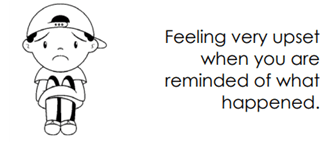
What is Re-experiencing
Percentage of children and adolescents were assaulted at least once in the past year
What is 50%
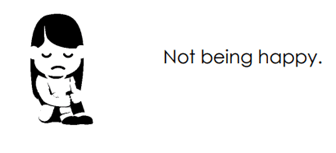
What is Negative Mood/Feelings
TFCBT treats these clusters of common reactions to trauma and stress:
What is re-experiencing/intrusive thoughts, avoidance, negative feelings and thoughts, arousal, and impairment/interference in relationships (friends and family), school progress, doing fun things, generally feeling happy .
True or False: Child sexual abuse is always perpetrated by adults.
What is False: 23% of reported cases of child sexual abuse are perpetrated by people under 18.
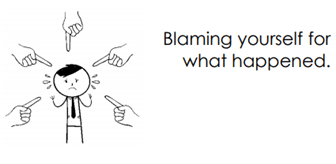
Negative Thoughts (Cognitions)
True or False:
The best way to handle trauma is to forget about it?
What is False. The best way to handle trauma is to go through TFCBT and talk about it. Over time it will ose its power over your mind.
True or False: Victims of a war can experience trauma
What is True
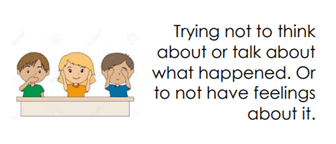
What is Avoidance
Percentage of children have been exposed to violence or abuse
What is 60%

What is Arousal
The treatment components of TFCBT
Think of the acronym PRACTICE. This is hard, try your best!
What is:
Psychoeducation and Parenting
Relaxation
Affective modulation
Cognitive coping
Trauma Narrative
In vivo exposure
conjoint sessions
Enhancing future personal safety
Reasons children don't tell about sexual abuse
What Threats of bodily harm, fear of being removed from home, fear of not being believed, shame or guilt.

What is Arousal